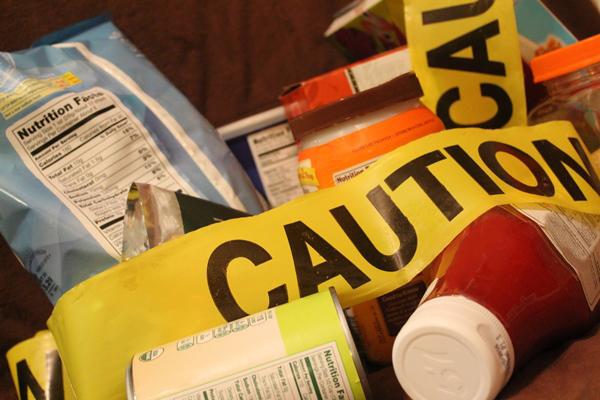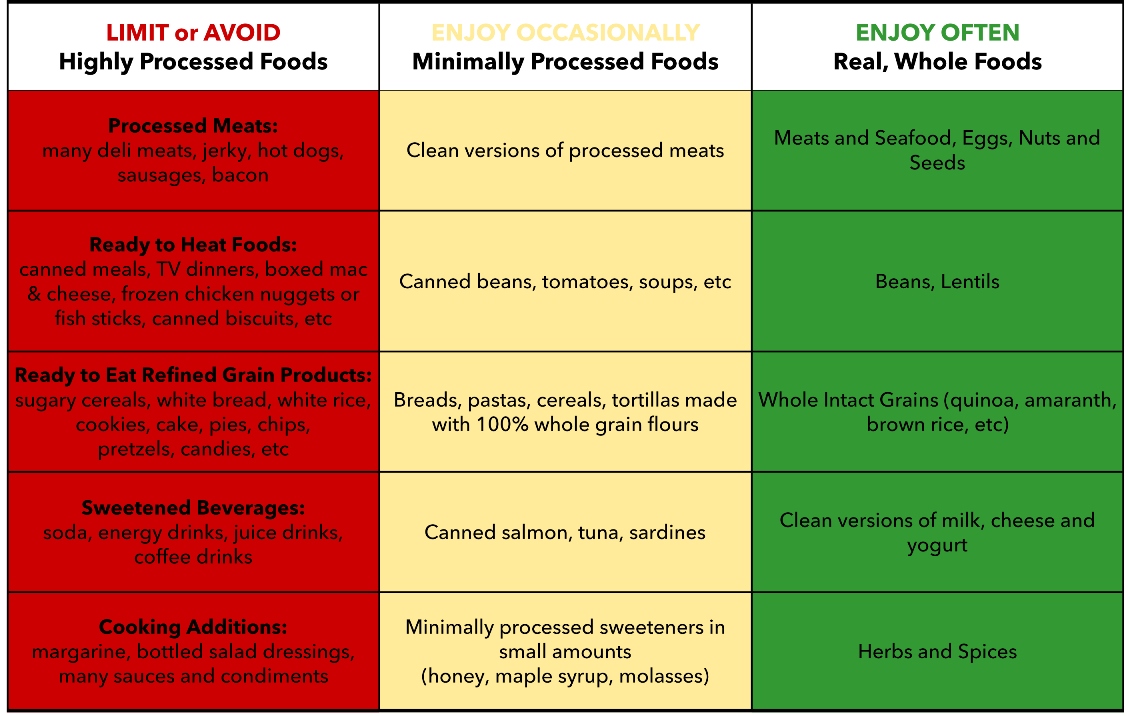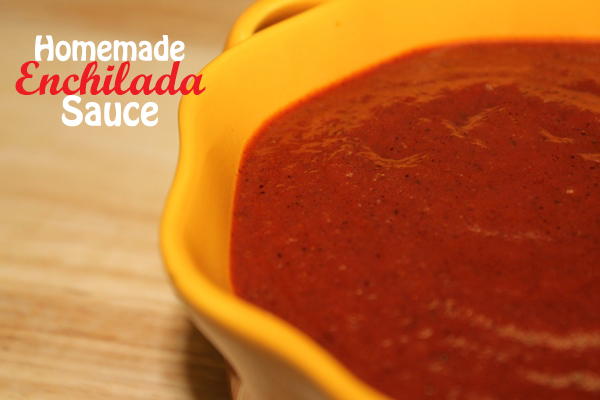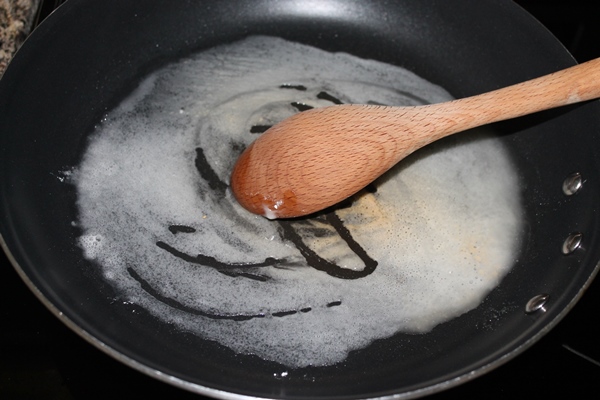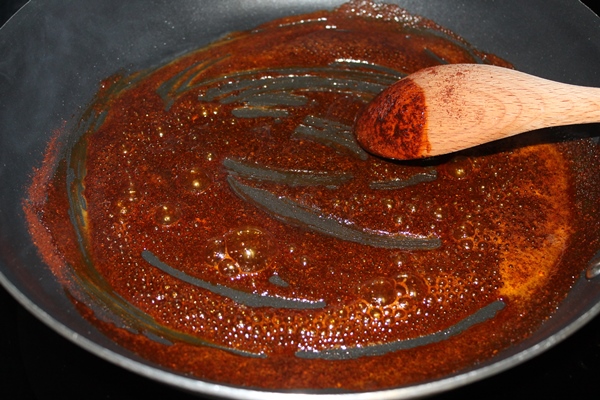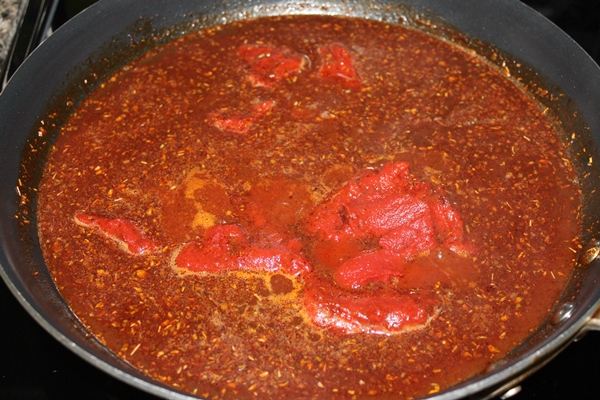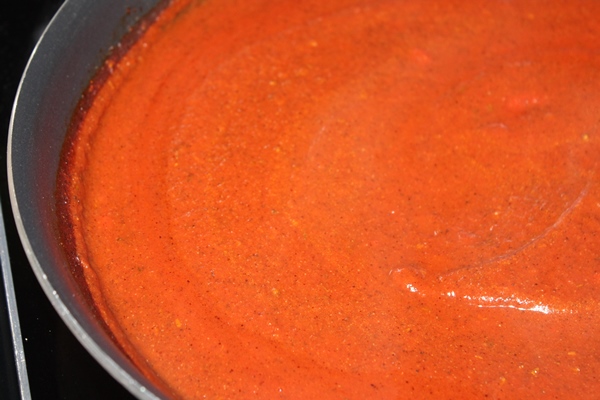Today’s society is all about doing things faster, smarter, better—including the food industry. While on the surface this may sound like a great idea (who wouldn’t want cooking to be faster, smarter, better?!), in reality the luxury of today’s convenient processed foods comes with a price tag: your health.
What Are Processed Foods?
Processed food no longer looks like it did in nature or it never existed in nature in the first place. Foods under this umbrella are typically found in boxes, bags, cans, and other types of packages. They often have healthy sounding names with health claims on the packaging to confuse you (made with whole grains, all natural, sugar free, vitamin fortified, etc).
Highly processed foods have been stripped of nutrients and may contain damaging ingredients (refined sugar, processed carbs, artificial colors and flavors, artificial preservatives and more). As explained by Dr. Mark Hyman, these “Frankenfoods have hijacked our brains, our hormones, and our metabolism and have literally created a vicious cycle of hunger and cravings.” Food manufacturers have mastered the science of making us literally need more of their products which leads to overconsumption…and overconsumption of these highly processed foods has been linked to obesity, inflammation and chronic diseases.
What Do I Eat Instead?
A recent analysis of U.S. grocery store purchases found that highly processed foods make up 60% of the calories in the foods we buy and that, on average, those foods are also higher in fat, sugar and salt compared to other foods we purchase.
Making the transition away from boxed, processed foods is a tough one since they can literally be addicting. To shift to a real, whole foods diet:
- Start SMALL! Eliminate one food at a time, moving on to another food once you feel comfortable with the first swap.
- Read ingredients on the things you already have at home to bring some awareness to what you want to replace and start reading ingredient lists on everything you purchase. The shorter the ingredient list, the better!
- Make simple substitutions like fresh fruit/veggies instead of canned fruit/veggies, roast your own potatoes in the oven instead of buying French fries, purchase 100% whole grain bread instead of white bread or opt for a bowl of oatmeal instead of sugary cereal.
- Plan, Plan and Plan some more. Eliminating processed foods means getting back in the kitchen but you don’t have to labor over the stove all day to have a homemade meal on the table. Utilize your slow cooker and freezer or try batch cooking so you’re only cooking a few nights a week. Plan your meals for the week, shop once or twice, and prep as much of the food when you get home from the grocery store as possible. This will all save you time in the long run.
In simple terms, “bid adieu to the middle aisles of the grocery store, and start shopping that perimeter, where the fresh foods reside.”- Amanda Woerner
Simple Swaps
For breakfast,
- Homemade protein bars
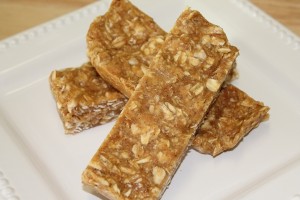
- Cottage cheese pancakes- add blueberries to the batter for a touch of natural sweetness and to omit the need for syrup (these freeze great- simply thaw overnight in fridge or heat directly in microwave)
- Egg Muffins
- Whole wheat waffles- omit the sugar in the recipe- it isn’t needed, and serve with a natural nut butter instead of syrup! (these freeze great- simply thaw overnight in fridge or heat directly in microwave)
- Breakfast Burrito (fill a clean whole grain tortilla with scrambled eggs, roasted veggies, leftover meats, cheese, beans, etc; wrap in plastic wrap or foil; freeze; reheat!)
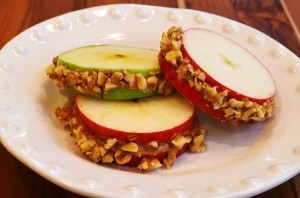
For snacks,
- Hummus with vegetables
- Roasted chickpeas
- Apple and peanut butter ‘sandwiches’
- Whole grain crackers with good quality cheese
- Roasted Kale Chips
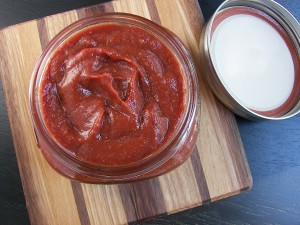 For seasonings and condiments when cooking meals,
For seasonings and condiments when cooking meals,
- Homemade ketchup
- Homemade salad dressing
- Homemade enchilada sauce (see below)
- Homemade taco seasoning (see below)
- Create your own favorite spice blends that you know you like ahead of time so they’re prepped and ready to use
Homemade Enchilada Sauce
Recipe from: Emeril Lagasse
Makes 2 ½ cups (approximately 20 ounces)
Ingredients
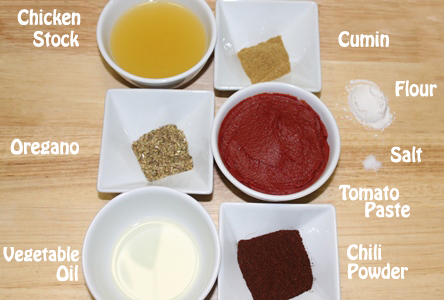
3 Tbsp vegetable oil
1 Tbsp flour
¼ cup chili powder
2 cups chicken stock
10 ounces tomato paste
1 tsp dried oregano
1 tsp ground cumin
½ tsp salt
Directions
1. In a medium saucepan, heat oil. Add flour, stirring with a wooden spoon. Cook for 1 minute.
2.Add chili powder and cook for 30 seconds.
3. Add chicken stock, tomato paste, oregano and cumin. Stir to combine.
4. Bring to a boil, reduce heat to low and cook for 15 minutes, stirring occasionally. The sauce will thicken and smooth out as it cooks.
Notes: This recipe makes the equivalent of 2 cans of enchilada sauce. If not used immediately, store in an airtight container in the fridge or freeze for later use.
Nutrition Information per ¼ cup: Calories 60, Fat 4.5g, Saturated Fat 0g, Cholesterol 0mg, Sodium 270mg, Carbohydrates 6g, Fiber 1g, Protein 1g
Homemade Taco Seasoning
Recipe from: 5dollardinners.com
Ingredients
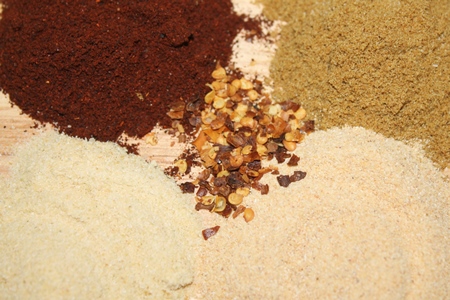
1 Tbsp chili powder
1 Tbsp ground cumin
1 Tbsp garlic powder
1 Tbsp onion powder
¼ Tbsp crushed red pepper
Directions
- Combine all spices until well blended.
- Store in an airtight jar or container.
- Add to your favorite taco, enchilada or other Southwest recipes.
Notes: One taco seasoning packet is approximately 3-4 Tbsp and will season 1-2 pounds of protein. Use similar quantities of this recipe, adding salt to taste, to mimic store bought taco seasoning.
Click here for a printer-friendly version of these recipes.
Click here for a printer-friendly version of this blog post.
